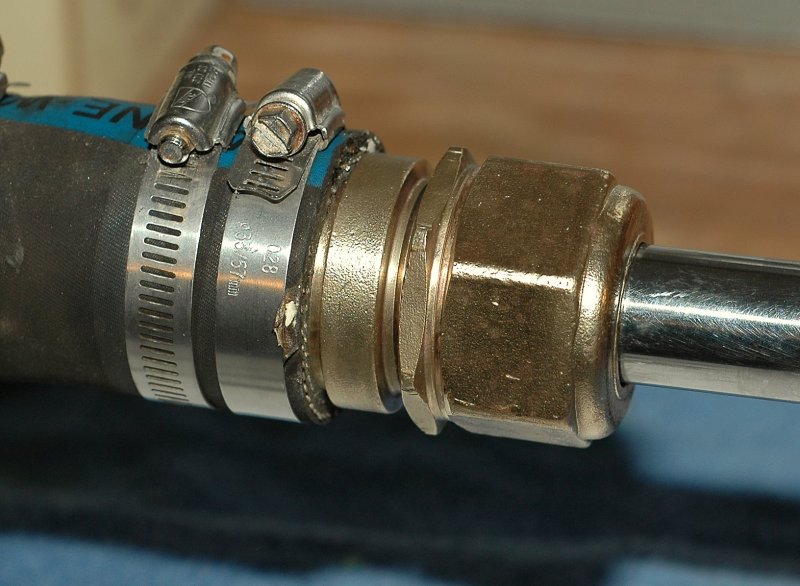-Servicing this in the water is super easy. Get the graphite impregnated teflon material as it's slippery and runs cooler, (sorry, I can't remember the size, but you can pull the stuffing box apart to measure the gap - put it back together while you order the material). Cut 3 rings of it with a hobby knife to fit around the shaft. Get some hooks to remove the old material. Get a small punch to gently press the new material into the box.
-Now you're ready.
-Unscrew both nuts and work the cover off. You'll get some water coming in, but nothing too worrisome. Use your hooks to remove the worn material. As you dig that out, you'll get more water flowing, but it's not bad and your bilge pump will easily keep pace. Carefully scrape out the rest of the old stuffing. Sometimes it comes apart in little furry pieces, but the inflow of water will help. Don't worry about the water coming in - it's not too much and you have already cut replacement rings that are nearby and ready to install.
- Once you're sure you've got most of the old packing out, wrap your precut stuffing material around the shaft and press it in. Make a note of where the ends joined, as you'll stagger the next ring to keep the gaps from aligning, (i.e. if the first ring ends join at 12 o'clock, the next ring should join at 6 o'clock. (on my boat I use 3 and 9 so I can see them go in). You can use the stuffing box cover to gently tap your ring into the box evenly
-Use 3 rings of material, then reassemble the box with those nuts. Run the engine in gear at the dock for 20 minutes and adjust it to drip 1 to 2 drops a minute.
This is a water cooled system. Run the boat at cruise and periodically check the box. It should never be hot, but slightly warm to the touch is just right. Loosen the nuts to increase the cooling water flow if it's running hot. This is a pretty easy job I do on my Yamaha every couple of seasons. I added a second nut to each stud to lock in my adjustments. Let us know how you make out.

